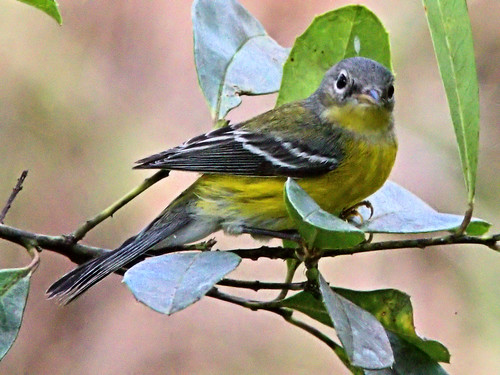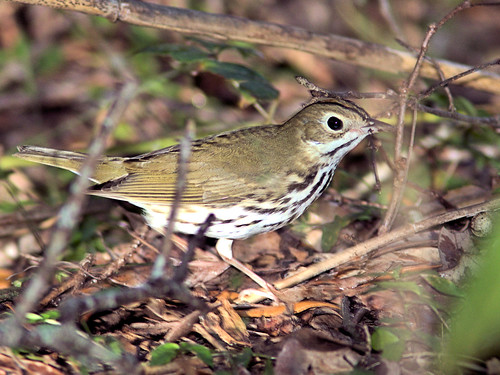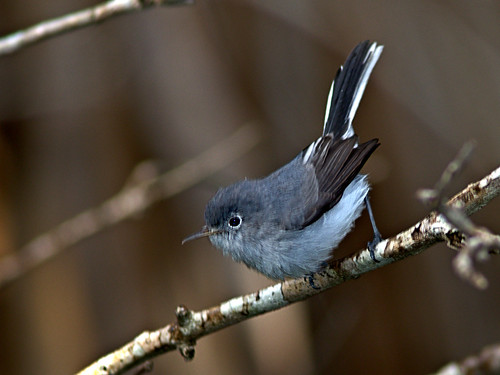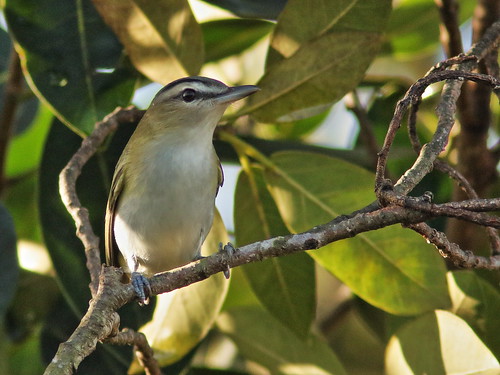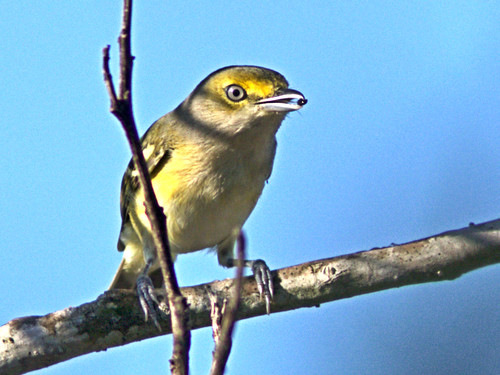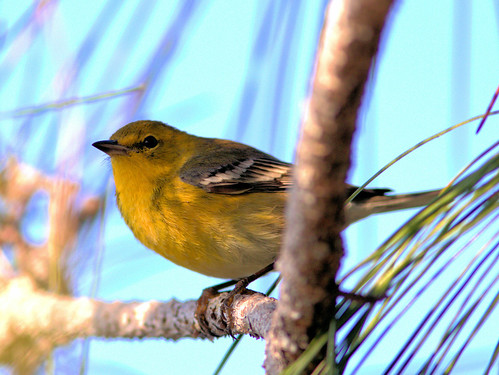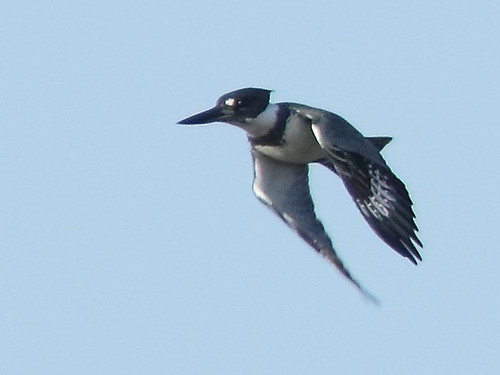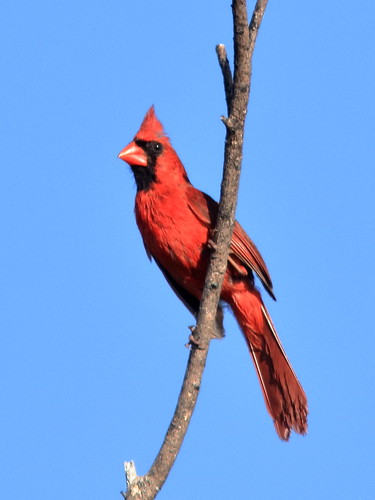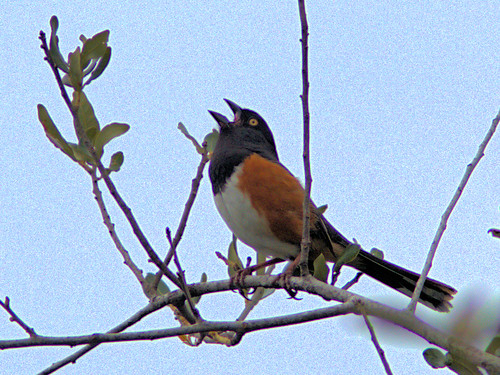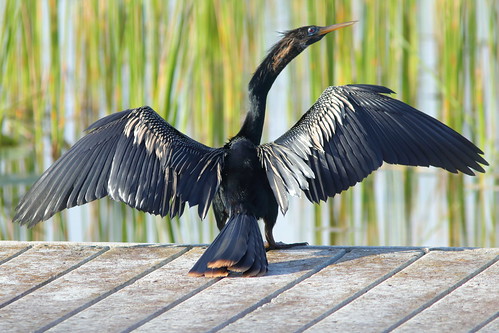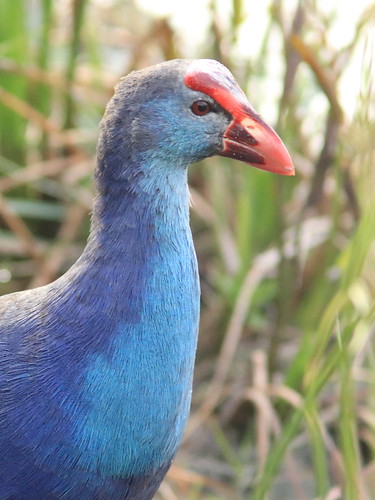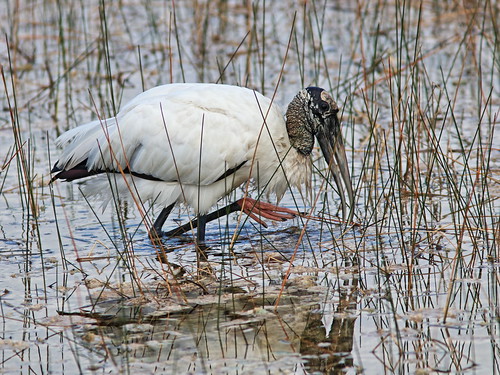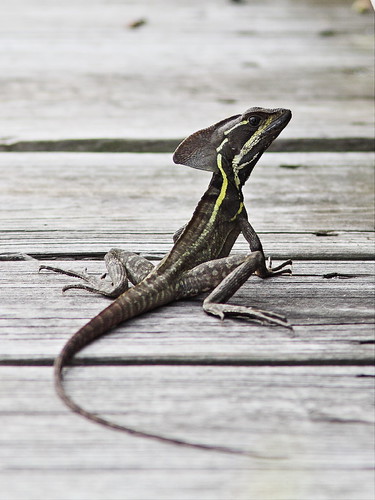Although this warbler nests far north of any Magnolia tree, it was named for the location in which it was first "discovered." American ornithologist Alexander Wilson found this species in magnolias near Fort Adams, Mississippi The adults are brightly patterned in yellow, black, blue-gray and white.
I photographed this northbound male in bold breeding colors at Nelson Lake preserve in northeastern Illinois on May 10, 2011:

Exactly eight years later, on May 10, 2019 I found this adult male in almost the same spot:
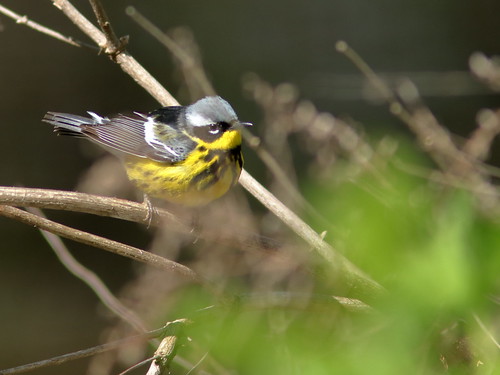
Also in Illinois, I obtained an underside view of another male back in May, 2014. Note the distinctive and unique undertail pattern with two terminal black spots:

This is a fall female (Illinois, September, 2017):

Most of the fall Magnolia Warblers we see here in Florida are first year birds. Their colors are subdued. These were present at Chapel Trail Preserve near our home during December, 2019--


In early January, while leading a nature walk at Chapel Trail I spotted an unusual Magnolia Warbler. It was a very bright yellow female, probably a first year immature bird. Its legs and bill were very pale. Its back was bright yellow without the normal dark streaking, and its head, wings and tail were light tan rather than dark gray. The spots under its tail were brown rather than black. Likewise, its eyes seemed not to be pitch black, but rather were brownish. During the following week I obtained a series of photos to document its plumage:
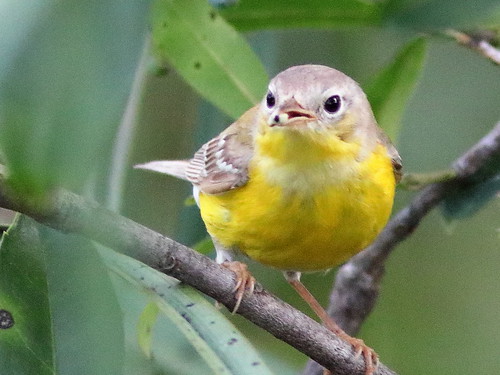
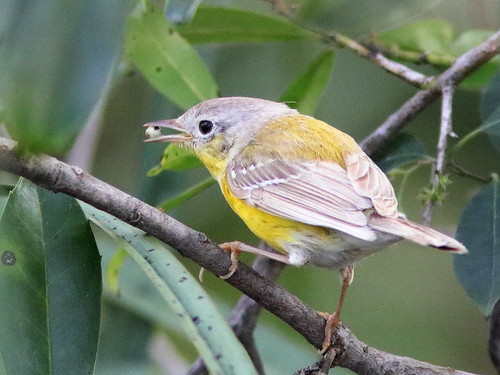
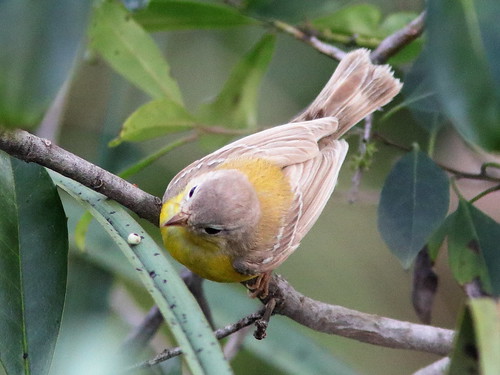
Although I was willing to describe this bird as having "dilute" plumage or possibly as being "leucistic," experts had a more specific name for its faded appearance. They classified it as exhibiting Type 4 oculo-cutaneous albinism. It lacks a specific black melanin pigment, but does produce other lighter melanin. A "pure" albino (Type 1A) would have no melanin and its plumage would be all white with pink eyes. Such a bird would probably not survive in the wild. This Magnolia Warbler may be relatively easy for a predator to locate and capture. (I enjoyed the thrill of discovery, but this may be more than you ever wanted to know!*)
Other warblers present at Chapel Trail were a Black-and-White Warbler...
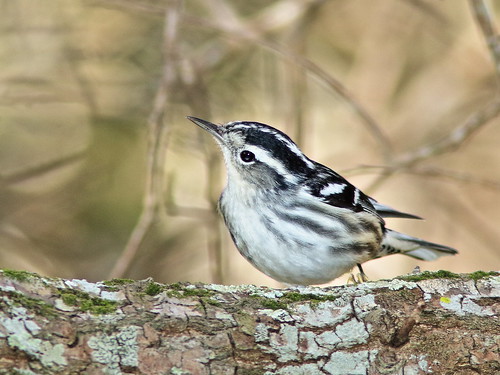

...an Orange-crowned Warbler:

...and many Yellow-rumped Warblers:

The boardwalk at Chapel Trail Nature Preserve:

Common Gallinule reflection:

*REF: Melanins are the ubiquitous pigments distributed in nature. They are one of the main pigments responsible for colors in living cells. Birds are among the most diverse animals regarding melanin-based coloration, especially in the plumage, although they also pigment bare parts of the integument. This review is devoted to the main characteristics of bird melanins... (LINK to EVEN MORE THAN YOU EVER WANTED TO KNOW)
= = = = = = = = = = = = = = =
Linking to :
Camera Critters
Saturday's Critters
Skywatch Friday
Weekend Reflections
BirdD'Pot
Our World Tuesday
Wild Bird Wednesday
Wordless Wednesday (on Tuesday)
All Seasons
Fences Around the World
______________________________________________
Please visit the links to all these posts to see some excellent photos on display
________________________________________________


